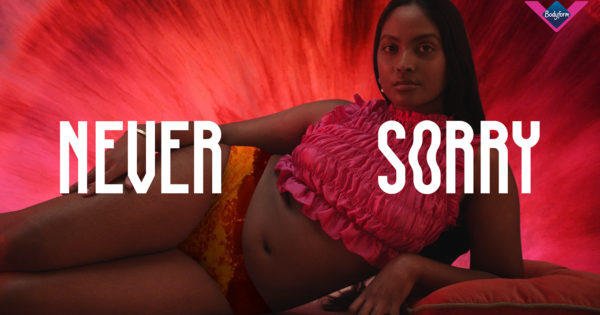Inside TikTok’s out-of-home marketing approach as it expands further beyond mobile
The social media platform has partnered with several digital media networks, including GSTV, Redbox and ReachTV as part of a larger push into digital out-of-home.

Since its inception, TikTok’s identity and viewership have been intertwined with a mobile-first experience. But the platform is now seeking to transcend phone screens and evolve into a ubiquitous element of the digital out-of-home landscape, too.
In the past four months, TikTok has inked deals with several OOH video networks to bring the platform’s content to a variety of additional screens including airport TVs, gas pump screens and, most recently, the video screens atop Redbox’s movie rental kiosks.
TikTok’s push into the realm of digital OOH is the platform’s latest initiative to extend the reach of both its user-generated videos and paid ads beyond just social media. It’s an effort TikTok has pursued for roughly the past year through deals with connected TV platforms, streaming services such as Vevo and movie theater screens through a partnership with Screenvision.
“We’re leaning into digital out-of-home because we feel the content showcased on TikTok shouldn’t necessarily just belong on TikTok,” said Dan Page, head of global distribution for TikTok’s so-called New Screens team, which since 2021 has worked to distribute TikTok videos across “as many screens as possible outside of mobile.”
“Yes, our platform is the place to consume content through your For You page. That is important,” he told Ad Age. “However, we also recognize there are 2 billion additional screens outside of mobile, and these are the screens that should feature the content that we have—the education content, the book content, the food content. You should be able to have that experience wherever you are.”
More: BookTok influencers revamp publisher’s TikTok strategy
TikTok worked with tech consultancy firm Omida to identify those estimated 2 billion global screens, which include digital OOH displays, screens within vehicles and cinema screens, according to a TikTok spokesperson.
Bringing TikTok videos to noisy locations such as airports, gas stations and grocery stores has required the platform to curate a continually updated library of video content that can be appreciated and understood without sound. On mobile, audio is a crucial element of TikTok content, with users and marketers alike often incorporating trending songs and other audio clips into their videos in hopes of achieving greater reach. In fact, in 2021, TikTok commissioned a study from Kantar which found 88% of TikTok users consider sound “essential to the TikTok experience.”
Gas stations and grocery stores
Page and the New Screens team are regularly picking out and licensing video content “meant to be viewed without sound, which includes art, sports, practical jokes” and other “lighthearted content that’s supposed to amuse you,” he said. TikTok gives attribution to creators whose videos are included in that content library, he added. Marketers, too, can capitalize on TikTok’s out-of-home expansion by extending their paid ads created for a mobile TikTok experience to these new digital out-of-home mediums, Page said.
For Sean McCaffrey, president and CEO of gas station video network GSTV, which announced its partnership with TikTok in June, marketers bringing their TikTok-optimized video content to new digital mediums helps brands remain at the forefront of consumers’ minds as they go about their day instead of solely while they’re scrolling through social media. He likens this broadening of TikTok consumption to a modern form of sequential messaging, where marketers can bring their ads designed to engage younger, digital-native consumers to screens they encounter closer to the point of sale in retailers such as convenience stores.
“We, as consumers, now live very fluid lives between the so-called digital and physical worlds,” McCaffrey said. “A lot of our brand partners—our client base is automotive, financial services, entertainment, QSR and a few other things—are using TikTok. And we think the partnership with TikTok is an opportunity for those brands to extend those campaigns to a real, larger audience.
“I think sometimes, as media strategists, we get a little too hung up on things like, ‘What is this called? Where does it fit in the budget?’” he continued. “Versus, as a consumer, if something is a relevant product to me, hitting me with it a few times in a few different places is going to be valuable.”
GSTV distributes video content on roughly 30,000 screens at gas pumps and convenience stores across the country, and the network will incorporate both user-generated and branded TikTok videos into its daily rotation of content, McCaffrey said. By bringing its videos to GSTV’s 116 million monthly viewers, TikTok is essentially evolving into a “broadcast viewership network as much as it is a digital platform,” he said.
Darren Olive, president of Crackle Connex—the advertising platform for Chicken Soup for the Soul Entertainment, Redbox’s parent company—echoes McCaffrey’s sentiment about TikTok videos’ unique ability to capture and influence consumers’ attention. Many of Redbox's 3,000 video rental kiosks that are topped with a TV screen are positioned just behind the checkout area in grocery retailers such as Albertsons, he said. Consumers waiting in line to purchase their groceries thus become a captive audience for a CPG brand’s ad or a video demonstrating a recipe using a given product that they could then be incentivized to go back into the store to buy, he said. Similarly, the ads they view while waiting in line could drive their purchases after they leave the grocery store, he said.
“For us, it's all about capturing attention within three or four minutes,” Olive said. “And if you think about what is effective in doing that, I don’t think there’s a brand out there that’s better at grabbing someone’s attention within a limited amount of time than TikTok, whether it’s content endemic to the products and services sold inside the store, or what their next consumer journey is going to be, like going to gas up or picking up dinner at a QSR.”
Crackle Connex has also seen significant growth in the digital OOH business in recent years, said Philippe Guelton, the company’s chief revenue officer. And it isn't aren’t alone. According to a March report from the Out of Home Advertising Association of America, digital OOH advertising soared by 24% in 2022 after also growing at a double-digit rate in 2021. The report cited digital OOH as a “key driver” for OOH advertising revenue as a whole, which also includes revenue from non-digital outdoor ads such as billboards, bus ads and wall murals, among other formats. OOH revenue jumped over 20% to $8.6 billion in 2022, per the organization's report.
Extending influencers’ reach
Along with bringing brands’ ads to a wider variety of digital screens, TikTok also views its pivot to digital OOH as a way for its creators to “showcase their content off-platform,” Page said. But TikTok is just one company pursuing the effort to bring creators’ content to new screens and leverage their growing influence.
Adomni, which owns over 700,000 digital screens in 30 countries, teamed up with influencer marketing platform Influential in June to extend creators’ videos to new mediums including digital billboards and shopping mall screens. With this partnership, Jonathan Gudai, founder and CEO of Adomni, and Influential CEO Ryan Detert are especially interested in enabling brands to bring videos featuring influencers talking about a given product or their experience with a brand—content that already has a significant impact on consumers’ purchases—to the physical world.
“We saw an opportunity where there's these massive, nine-figure budgets that exist for brands, but they’re bifurcated between social media and DOOH,” Detert said. “They really should be connected together, because wherever the audience lives is where advertising should be.”
Like GSTV’s McCaffrey, Detert and Gudai pointed out how having creators’ social media content follow consumers beyond their phone screens to locations such as billboards, point-of-scale screens or gym TVs can contribute to a sequential messaging strategy. If a consumer is viewing creators’ product or brand recommendations in short, consistent bursts throughout their day, they’re more likely to “shorten the purchase cycle” and click on the link to buy that product when they see similar creator recommendations in their social media feeds.
“It’s about a one-two-three combo—the little screens and big screens all interplaying,” Gudai said. “By the time you’re home at night and watching TikTok or scrolling on Instagram, you’re going to be more likely to click on that ad, because you’ve been exposed to either that exact same piece of content or something similar out in the real world.”

 Aliver
Aliver 
































